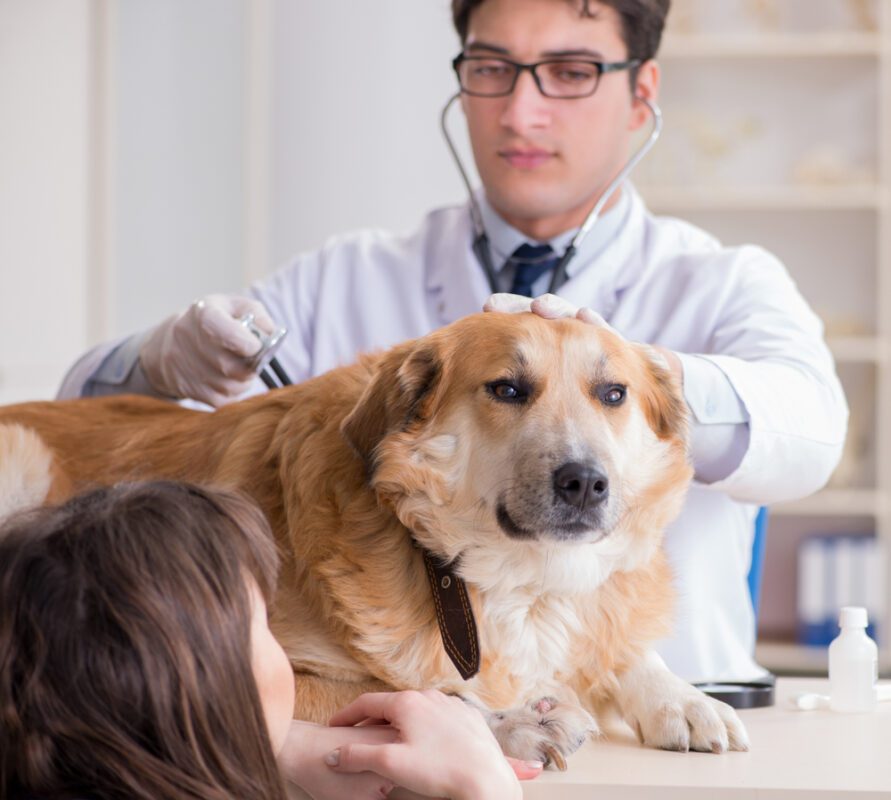Just like any other creature, dogs can get sick too. There are some dog breeds that can suffer from certain genetic diseases, while others are more likely to catch various viruses and bacteria that adversely affect their overall health. However, how their body reacts when it comes to a specific disease depends on certain internal and external factors, such as their lifestyle, breed, family history, and other living conditions.
When you become a pet parent, you have a lot of responsibilities, especially because, unlike other animals, dogs are similar to kids which means that they need special care, attention, time, regular vet checkups (although don’t take your kids to the vets), quality food and daily walk. Of course, they can’t be left alone for too long. That being said, it’s your responsibility to pay more attention to your dog’s behavior, to recognize the signs and symptoms of a possible illness, and to seek veterinary help for diagnosis and treatment.
So, to help you better understand your dog’s behavior and health condition, here are some of the most common dog diseases that you have to look out for. Read on for more info!

Sprains
Sprains can harm the ligaments of your dog, causing joint damage in the long run. These complications caused by sprains are more likely to develop in dogs that jump all day, hunt other animals, or perform any sudden movement or intense physical activity. Sprains can affect their knees and wrists. In some cases, sprains can lead to a ruptured cranial cruciate ligament (CCL), which is one of the worst issues because it connects the bones of the knee.
So, if your beloved furry friend starts to limp or is suddenly lame and these symptoms last more than a day, you should definitely talk to your vet about this problem and follow their treatments. Most of the time, these symptoms can reappear after a short period of time.
Hypothyroidism
First of all, it’s important to understand a little bit of biology and how their body function, in this case, namely the thyroid gland is placed in their throat and is responsible for creating a hormone called thyroxine – this hormone controls their metabolism, which is also responsible for turning food into energy. Hypothyroidism is a disease that occurs when this gland (thyroid gland) can’t produce enough thyroxine.
Unfortunately, this is among the most common diseases that can be found in all types of breeds, but especially in golden retrievers, Irish setters, boxers, cocker spaniels, Doberman pinschers and dachshunds.
Symptoms of hypothyroidism in dogs include hair loss, black patches of skin, weight gain – even though they can’t eat, muscle loss, slowed heart rate and ear infections. Nevertheless, this disease can be treated with drugs (recommended by your veterinarian, of course). In general, the treatment is effective, but they have to follow it for the rest of their life.
Arthritis
As you probably know (because this disease can occur in humans as well), arthritis is a disease caused by an inflammation of the joints, causing pain and discomfort.
The most common symptoms of arthritis are lameness, frequent colds, excessive licking in the joint areas, lethargy and anxiety. Arthritis can affect one or more joints, but it depends on your dog’s lifestyle and breed, so you have to seek veterinary help to tell you which joints are affected and to give you the appropriate treatment.
Eye Infections
Some of the most common diseases that can put the life of your dog in danger are eye infections, such as conjunctivitis, jaundice, allergies, and fungal infections. Many factors can lead to these diseases, from their hygiene and living conditions to their nutrition.
However, the most common symptoms of an eye infection include eye redness, swollen eyelids, eye discharge and rubbing at the eyes.
So, if you see something strange in your dog’s behavior, such as excessive rubbing at their eyes, sneezing, coughing, tearing eyes and so on, you should definitely talk to a vet as soon as possible. Treatment may vary, from eye drops and creams to antibiotics.

Bladder diseases
If you notice that your dog has some urinary problems, such as pain and discomfort, it may be a sign that they suffer from bladder diseases. In other words, if you see that your beloved furry friend pees where they shouldn’t, strains when peeing or pee around your house, you should take your pet to your vet as soon as possible.
In general, bladder disease is caused by stones, infections, inflammation, tumors and other bladder issues, and unfortunately, symptoms can worsen if left untreated.
Don’t try to solve the problem without talking to your veterinarian first. It’s very important to take into consideration their recommendations and follow their treatment. Depending on the severity of the problem, treatment varies, but the most common and effective options are antibiotics, removing the stones, surgery or chemotherapy.
You have to take into consideration when it comes to trouble peeing in dogs is consulting your vet’s opinion as soon as possible because otherwise, it can lead to severe complications that can even cause death.
Stomach upsets
Many things can cause an upset stomach, but the most common cause is their diet. According to Kathy Backus, DVM, at Holistic Veterinary Services in Kaysville, Utah, “dogs Vomiting and diarrhea are signs that a dog’s body is trying to expel something that shouldn’t be in their system.
As you probably know, the most common symptoms of an upset stomach are vomiting, diarrhea, loss of appetite, fatigue and drinking less water. Treatment consists of a change in diet, vaccines, medication, or other therapies.

Pyoderma
Pyoderma is a bacterial skin infection and refers to papules or pustules that appear on the skin of your furry companion. To help you better recognize this disease, pyoderma is similar to pimples in humans.
If you are a dog owner, it’s important to know that this skin disease isn’t contagious at all, which means that you can still let your dog socialize with other animals. The most common symptoms are hair loss, pustules, lesions on the skin and anxiety. In general, vets recommend antibiotics, a strict hygiene routine, and vaccines.
Heartworm
Heartworms are a terrible parasitical disease that spreads through mosquito bites. The scientific name of the disease is Dirofilaria Immitis. Heartworms are teeny-tiny parasites that eat the heart, blood vessels, and lungs of an infected canine.
There’s currently no vaccination for this illness, but it can be successfully prevented by administering heartworm medications, but also injecting the dog with melarsomine injections. The most common symptoms are weight loss, lethargy, heart disease, coughing, and even respiratory issues.
Constant checkups and regular blood tests, along with pills and shots are the best way to prevent such a dangerous disease. The larvae of this horrible parasite usually take 6 months to develop. If there’s any chance to intercept this disease in its earliest stages, it can be efficiently treated.
If you’re the proud owner of a dog and you want to know how to properly take care of him, here’s what we recommend reading: How Can You Tell if Your Dog Has Anemia? Here Are 14 Symptoms











